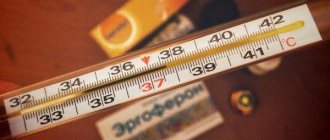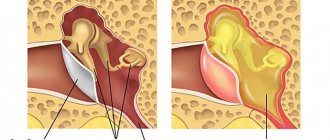The relationship between nose and head pain
The nose is one of the sections of the respiratory system. It consists of several departments interconnected. If diseases occur on the visible part of the nose, they are easy to diagnose. However, nasal pain can be caused by damage to the internal parts that are located inside the skull. To understand why the nose hurts and radiates to the head, it is worth familiarizing yourself with its structure.
- The outer nose is the visible part. Its shape is formed by cartilage and several bones, as well as facial muscles. This is the first section into which the inhaled air penetrates, so it is initially purified from small particles and microorganisms.
- The nasal cavity is an expansion formed by bones and cartilage. Its posterior part narrows and passes into the nasopharynx.
- Paranasal sinuses (paranasal sinuses) are additional cavities that are located on opposite sides of the nasal cavity. There are anterior and posterior sinuses.
All parts of the nose are covered with mucous membrane. It is continuous, contains nerves and vessels, and connects to the epithelial layer of the oropharynx. The nasal mucosa has a distinctive feature - it contains olfactory receptors, with the help of which the nervous system is able to distinguish odors. In addition, it is the first barrier against viruses and bacteria that enter the body with inhaled air and can cause infectious diseases of the respiratory system.
Diseases that cause nasal congestion and discomfort reduce the supply of oxygen to the lower respiratory system. This causes insufficient nutrition of tissues, especially brain cells. Most colds are accompanied by a headache, which occurs due to respiratory failure. In addition, colds are accompanied by swelling of the mucous membrane, inflammatory processes, and increased formation of exudate.
Sinusitis - symptoms and treatment
Symptoms of acute sinusitis
Sinusitis begins with a runny nose, like any other respiratory infection.
The appearance of a runny nose means that the sinuses are already inflamed to one degree or another. If a runny nose does not go away within 7-10 days or the symptoms worsen, then you should take it seriously and seek medical help.
A characteristic sign of acute sinusitis is pain in the bridge of the nose and the area of the maxillary sinuses - under the eyes at the level of the cheeks. By evening, the bursting pain becomes more intense. Also, unpleasant pressure in the sinuses increases when tilting or turning the head. If a patient has an inflamed sinus, pain is felt on one side. If the inflammation is bilateral, it hurts on the right and left of the nose. Painful sensations can radiate (give) to the teeth or temporal region.
The second typical symptom of sinusitis is persistent nasal congestion. Sometimes the condition is accompanied by copious mucus or suppuration from the nose. At the initial stage of the disease, the discharge is transparent, then the mucus becomes thick and acquires a green tint, this indicates a change in the phase of inflammation. A change in the nature of the mucus sometimes indicates purulent inflammation. If treatment is not started immediately, the disease may prolong, become more severe, or become more complicated. With severe swelling of the nasal mucosa, there may be no discharge, but the feeling of nasal congestion remains.
Body temperature is usually raised to 38 °C or more. Smells become barely distinguishable, sometimes the sense of smell disappears completely. The patient feels severe weakness and becomes lethargic. It is very difficult to work and do usual things during this period.
Symptoms of chronic sinusitis
In chronic sinusitis, the symptoms are blurred. The disease does not proceed as brightly as in the acute form. During the period of remission there are no complaints. When the disease worsens, the patient’s body temperature rises to subfebrile levels (37.5 ° C), nasal discharge of various types appears (from liquid, clear to purulent) and headaches.
When the patient lies or sleeps, the bursting pain decreases due to the outflow of pus. People with chronic sinusitis periodically complain of coughing attacks at night, which cannot be treated with classic cough medications. The cause of the symptom is mucus from the nasal cavity constantly flowing down the back wall of the pharynx, which irritates the cough receptors [4].
What can hurt your nose?
The most common cause of nasal pain is inflammatory reactions . They occur in response to the penetration of pathogenic microflora or mechanical damage. Inflammation can begin in any area, but often spreads to adjacent areas and affects several structures simultaneously. It often begins on the mucous membrane, as this is where the immune system's initial fight against viruses and bacteria occurs. Then the process can spread to the skin and subcutaneous tissue, cartilage tissue, blood vessels and nerves, paranasal sinuses, and nasopharynx.
Causes of pain in the nose and head
Pain in the nose that radiates to the head is the result of a number of pathological processes. They can be associated with internal or external factors that cause inflammation of the nasal structures or disruption of their anatomical integrity. Based on the exact location of the painful focus, its cause can be assumed. According to the mechanism of development, several main groups of diseases are distinguished:
- inflammatory processes - often occur with viral and bacterial diseases, but can also be associated with autoimmune processes and allergic reactions;
- injuries - accompanied by mechanical damage to the mucous membrane, skin and subcutaneous tissue, as well as cartilage tissue and other structures;
- Poor circulation in certain areas of the nose or nasopharynx is a less common cause of nasal pain and is associated with aseptic cell necrosis (death without the participation of pathogenic microflora).
Another classification distinguishes several groups of causes, depending on the location of the main cause of nasal pain. These include:
- diseases of the external nose - often represent damage to the skin and subcutaneous tissue (furuncle, carbuncle, erysipelas, eczema);
- diseases of the inner nose - can affect both the mucous membrane and bone and cartilage tissue, and also occur due to the ingress of foreign objects and injury to internal structures;
- diseases of the paranasal sinuses - represent a separate group of diseases that involve infection and inflammation of the mucous membrane;
- diseases that can simultaneously affect several structures of the nose - these include both viral and catarrhal rhinitis, as well as more dangerous pathologies (tuberculosis, granulomatosis).
It is important to determine the primary cause of nasal pain in order to select an effective treatment regimen. Doctors at the Clinical Institute of the Brain will make an accurate diagnosis in a short time, based on the results of the examination. Treatment tactics will differ for injuries, infectious diseases, allergic and autoimmune processes.
Rhinitis
One of the most common reasons why the nose and head hurt is rhinitis, or runny nose, inflammation of the nasal mucosa. It is a symptom of most colds caused by viruses and bacteria. Pathogenic microflora penetrates the nasal mucosa, where the main fight of the immune system against infection occurs. The process is accompanied by inflammation, redness and swelling of the mucous membrane, and increased secretion of exudate.
The main symptoms of rhinitis include:
- runny nose, nasal congestion – excessive exudation makes breathing difficult;
- pain in the nose - more often they are concentrated at the site of inflammation;
- headaches - occur due to difficulties with breathing, as well as as a result of deterioration in general well-being;
- itching and burning in the nose.
Treatment for rhinitis depends on its cause. If the disease is caused by a viral infection, it is important to strengthen the immune system and provide the patient with bed rest. To make breathing easier, the doctor will select medications in the form of nasal drops or spray. They contain anti-inflammatory and antiviral components, as well as substances that constrict blood vessels and reduce the appearance of a runny nose.
Sinusitis
Diseases of the paranasal sinuses can occur independently or as a complication of colds. Normally, paranasal sinuses are aseptic formations in which there is no pathogenic microflora. If viruses or bacteria penetrate the mucous membrane of the sinuses, inflammatory processes begin. The danger of the disease is that normally there is no fluid in the sinuses, so draining the exudate is difficult. The cavities can be filled with liquid contents or pus, depending on the cause and type of inflammation.
There are several main types of sinusitis, which develop in different paranasal sinuses:
- Sinusitis is inflammation of the maxillary (maxillary) sinuses. They are located to the left and right of the nasal cavity and connect to it. Sinusitis is the most common form of sinusitis, accompanied by pain in the nose, bridge of the nose and head.
- Frontitis is inflammation of the frontal sinuses. They are located above the nasal cavity, in the thickness of the frontal bone. They are paired, but connected to each other by a common partition. Frontal sinusitis is diagnosed less frequently than sinusitis, but is also a common type of sinusitis.
- Sphenoiditis is inflammation of the mucous membrane of the sphenoid sinuses, a rare pathology. These sinuses belong to the posterior ones and are located in the thickness of the sphenoid bone. Their lower wall is the upper arch of the inner nose. Despite the fact that sphenoiditis occurs rarely, it is considered a dangerous disease. This is due to the deep location of the sinuses, the difficulty of accessing them and difficult drainage of fluid.
- Ethmoiditis is inflammation of the mucous membrane of the ethmoid bone. Their number is not constant, in different people it can range from 8 to 10. The sinuses are cells of the ethmoid bone. Ethmoiditis rarely develops as an independent disease; it often accompanies other forms of inflammation of the paranasal sinuses.
A lingering runny nose, pain in the head and bridge of the nose, behind the eyes often indicates the onset of sinusitis. Other inflammatory diseases of the sinuses are diagnosed less frequently. It is useful to know about one characteristic symptom of sinusitis, with which the disease can be recognized even at home. To do this, you need to bend over sharply and lower your head to the ground. If at the same time acute pain begins in the nose and head, in the forehead and bridge of the nose, inflammation of the maxillary sinus can be assumed.
Treatment of sinusitis is prescribed individually. The most common method is nasal rinsing combined with a course of antibiotics. These drugs destroy bacterial microflora, thereby eliminating the symptoms of purulent inflammation. However, in acute forms of sinusitis, drainage of the maxillary sinuses may be necessary. The procedure consists of puncturing them, removing purulent contents and treating the mucous membrane with antiseptic solutions.
Injuries
One of the causes of pain in the nose and head is injury . Nasal fractures, damage to the nasal septum and other factors lead to disruption of tissue integrity and hemorrhages, deterioration of blood supply and innervation of certain areas. Injuries to the internal structures of the nose can also be caused by foreign bodies entering the nasal passages. The process is dangerous, since pathogenic microflora multiply in damaged areas, tissue suppuration and necrosis occur. In addition, if recovery is not performed correctly, the patient may find it difficult to breathe even after a long time.
Treatment for injuries is prescribed based on the results of the examination. If the bones and cartilage remain intact, and only damage to the skin, subcutaneous tissue and mucous membranes is detected, it is important to regularly treat these areas with antiseptics. In case of displaced fractures, an operation is prescribed, during which the bone fragments are returned to the anatomically correct position. With proper rehabilitation, breathing returns to normal without consequences.
Inflammatory diseases of the skin and subcutaneous tissue
Diseases of the skin and subcutaneous tissue can appear on both the outer and inner surfaces of the nose. They are often associated with the entry of pathogenic microflora and its reproduction in a favorable environment. In addition, inflammation develops as a result of microtraumas. There are several formations that can appear in different parts of the external nose, causing headaches and breathing problems.
- Furuncle - formed when the sebaceous gland is infected with staphylococci or streptococci. It is a small, painful raised area above the surface of the skin containing pus. Most often, boils appear on the skin, in the area of the tip or wings of the nose.
- A carbuncle is a larger formation that occurs when the sebaceous gland, one or more hair follicles are simultaneously infected. The process spreads to the skin, subcutaneous tissue and mucous membranes, causing their purulent melting. A carbuncle is a dense, painful formation of a red or bluish tint that causes acute pain and fever.
- Eczema is an allergic inflammation, but its exact cause has not been established. The skin of the tip and wings of the nose is often damaged. It becomes dry, turns red, cracks, ulcers and blisters filled with transparent aseptic content may appear on it. Due to a violation of its integrity, boils, carbuncles and other manifestations of skin suppuration may form in the affected areas.
- Erysipelas (erysipelas) is an infectious disease that affects the skin and subcutaneous tissue. It is caused by specific microorganisms, hemolytic streptococci. They cause inflammation, redness of the skin and subcutaneous tissue, as well as hardening of these structures. These areas are painful, and in many patients they are separated from the healthy skin of the nose by a noticeable ridge.
In infectious diseases, redness of the skin, swelling and an increase in local temperature are observed. Limited formations are less dangerous because the purulent contents are enclosed in a capsule. To get rid of them, a simple procedure is carried out in which the abscess is opened, cleaned and treated with antibiotic solutions. Diseases in which the pus is in a diffuse state require complex treatment using broad-spectrum antibacterial drugs.
Allergy
If your head and nose constantly hurt, or a chronic runny nose does not stop, this may be the first sign of an allergy. It is a pathological reaction of the immune system to various stimuli. If in a healthy person the immune factors react only to viruses and bacteria, then in an allergic person they react to any substances. Thus, dust and pollen, animal hair, household chemicals and dyes, and certain products often become allergens. When they enter the body, characteristic allergy symptoms appear:
- pressing headaches, dizziness;
- runny nose, difficulty breathing;
- deterioration in general health;
- swelling of the nasal mucosa;
- irritation and redness of the skin, itching, burning and rash.
At the first symptoms of an allergy, it is important to determine what caused it. The easiest way is to track what new substances the patient has been in contact with recently. Allergy tests are considered the most accurate method. Concentrated allergens are injected under the skin in the forearm and the reaction is observed for several days. If inflammation develops at the injection site and a painful swelling appears, it can be argued that this substance is an allergen. Antihistamines are used for treatment, which suppress the immune system's reactions.
A specific type of allergy is autoimmune reactions . They arise in response to internal factors and the body’s own tissues. Manifestations of these processes also include headaches, inflammatory reactions, damage to the skin and mucous membranes. Treatment is selected individually, its main stages are reducing the sensitivity of the immune system and anti-inflammatory therapy.
Herpes
Herpes is a viral disease with a chronic course. It can cause various diseases, including damage to the skin and mucous membranes. Small blisters form in the nose area, the skin becomes red and inflamed, and an itching and burning sensation appears. The bubbles are located close to each other, in a limited space. They open on their own, leaving behind small ulcers.
The herpes virus is present in the body of most people, but occurs in a latent form. An exacerbation is caused by a decrease in immunity, and therefore may be associated with colds. Antiviral and restorative drugs are used to treat it. However, after recovery, immunity is not formed. In addition, the virus continues to be present in the body, so another exacerbation can occur at any time.
Other reasons
The exact cause of the pain in the nose, which radiates to the head, can only be determined as a result of a complete examination. If viral rhinitis remains the most common diagnosis, then diagnostics may also reveal more rare and dangerous pathologies. To identify them, it is important to pay attention to all the signs and carry out the necessary tests.
The examination may reveal the following abnormalities:
- dental diseases (caries, abnormal growth and position of teeth);
- tuberculosis is a chronic disease caused by mycobacteria, which manifests itself, among other things, in the destruction of nasal structures and acute pain in the head;
- granulomatosis is a systemic autoimmune disease in which normal tissues are destroyed and replaced by dense connective tissue;
- neoplasms - can be found in any area;
- abnormalities in the structure of the nose, often manifested by a deviated nasal septum and difficulty breathing.
When diagnosing, the doctor takes into account all possible options, but is guided by the data of the examination and questioning of the patient. You should not be afraid of dangerous diseases if your complaints include a runny nose and headaches.
Causes of nose pain
Rhinitis
Soreness is more typical for chronic runny nose, accompanied by a change in the anatomical and functional state of the nasal cavity.
Intense pain occurs with atrophic rhinitis, which is caused by drying out of the mucous membrane, the formation of wounds and crusts on it. Patients feel a burning sensation and discomfort when blowing their nose or inhaling dry or hot air. In acute rhinitis, pain is directly related to too frequent blowing of the nose and rubbing the skin with handkerchiefs. In this case, the unpleasant sensations are localized in the area of the wings of the nose. Pain is possible when using nasal drops, especially those containing vasoconstrictors or antibiotics. Basically, with a runny nose, the pain is of moderate intensity; if it becomes very severe, this is a sign of the development of complications.
Sinusitis
Inflammation of the paranasal sinuses is characterized by constant pressing pain, which intensifies when the head is tilted down, when trying to rinse the nasal passages with water or saline solutions. The localization of discomfort depends on the affected paranasal sinus: with frontal sinusitis, a person complains of intense pain near the bridge of the nose, with sinusitis - of discomfort in the area of the wing of the nose on one side.
With sinusitis, pain in the nose can turn into sharp and pulsating, which is specific to an acute process. Swelling and swelling of the skin in the affected area are noticeable; upon palpation, the discomfort increases sharply. The symptom is accompanied by the appearance of purulent yellow-green mucus with an unpleasant odor, in which streaks of blood are sometimes visible. Patients complain of severe headaches, fever, and malaise.
Nose pain
Purulent processes
Severe bursting pain is characteristic of an abscess of the nasal septum. At first, the person experiences slight breathing difficulties and discomfort. As the abscess grows, the pain intensifies and becomes permanent. Unpleasant symptoms are aggravated when you wrinkle your nose or try to blow your nose. Often, when examining themselves in the mirror, patients discover unusual thickening or deformation of the visible part of the nasal septum.
Excruciating “tugging” pain in the nose is felt when the boil ripens. The abscess can be localized on the wings or tip of the nose, in the initial part of the septum. Discomfort begins suddenly; when palpated, a person finds a lump in the place of greatest pain. Symptoms become more noticeable when smiling, sneezing, or chewing. The boil gradually increases in size, the skin around it looks hyperemic.
With a boil, severe pain in the nose lasts until the abscess breaks through, which takes an average of 7 days. Throughout this period, patients are constantly tormented by pain, which intensifies at the slightest touch. After the covering of the abscess breaks through and the contents come out, the condition improves. Most of the unpleasant symptoms disappear, leaving only slight pain and burning in the affected area.
Foreign body of the nose
The intensity of painful sensations is influenced by the size and surface features of the foreign object. Small beads and peas do not cause severe discomfort. Patients experience moderate pain in one half of the nose, repeated sneezing, after which the foreign body usually comes out on its own. If a larger object gets into the nasal passage, the person is constantly bothered by sharp or bursting pain, sneezing and copious mucous discharge.
Intense pain with irradiation to the cheek or forehead is observed with foreign bodies with uneven or sharp edges. In addition to pain, nosebleeds of varying degrees of severity occur. There is difficulty or absence of breathing in the affected half of the nose. Sometimes patients complain of severe scratching pain in the throat, which indicates the object has been displaced.
Injuries
Sudden sharp pain is the main sign of bruises or fractures of the nose. A person feels constant pain, which intensifies when trying to blow his nose or feel the site of injury. With a hematoma of the nasal septum, breathing is often difficult, which is why the victim has to breathe through the mouth. Injury is indicated by bleeding, severe swelling and changes in facial contours.
Severe burning pain develops when the skin and mucous membranes are exposed to high temperatures, acidic or alkaline agents, or electric current. When the skin of the nose is burned, the patient experiences an excruciating burning sensation and pain, which decreases after rinsing the face under running cold water. Damage to the nasal mucosa is characterized by unbearable pain and an irresistible desire to blow your nose, which is accompanied by bloody discharge.
Neoplasms of the nasal cavity
With benign tumors (papilloma, chondroma, osteoma), patients are more concerned about the sensation of a foreign body and difficulty breathing, and pain occurs secondary. The appearance of discomfort is typical for large tumors that put pressure on the walls of the nasal cavity. The symptom is combined with a decreased sense of smell and congestion of one half of the nose. Occasionally, bleeding occurs with vascular tumors.
With cancer of the nose and paranasal sinuses, patients experience constant pain, radiating to the forehead, temple or cheek. The discomfort is felt more strongly when sneezing, yawning, or chewing food. When a tumor grows, a person may experience pain in the tissues of the upper lip, hard palate, and gums. Malignant tumors are characterized by mucopurulent or bloody nasal discharge, anosmia, and enlarged regional lymph nodes.
Rare causes
- Neurological diseases
: ganglionitis of the pterygopalatine ganglion, trigeminal neuralgia, Charlin's syndrome. - Ophthalmological diseases
: orbital phlegmon, dacryocystitis, orbital wall fistulas. - Dermatological pathologies
: eczema of the nasal vestibule, herpetic infection.
Diagnostic methods
Before starting treatment, the doctor will prescribe an examination that will determine the cause of pain and poor health. As a result of the examination, swelling, redness of the skin and mucous membranes of the nose, rash and other characteristic signs of a number of diseases can be detected. The patient needs to clarify when and under what conditions the first symptoms appeared. However, additional techniques will be required to make a final diagnosis.
- Rhinoscopy is one of the simplest procedures that allows the doctor to examine the internal structures of the nose using a mirror. To examine the anterior parts of the nose, it is enough to use a nasal speculum. It is wide and is used to assess the condition of the nasal turbinates and septum, as well as the mucous membrane. If necessary, the doctor uses a nasopharyngeal speculum. It is small, placed on a thin metal stick. Access to the tissues under study is carried out from the oropharynx.
- Endoscopy is a more invasive, but informative procedure. It is performed using an endoscope. It is a miniature camera on a thin, flexible tube that easily follows the movement of the nasal passages. Endoscopy allows you to examine the mucous membrane of the internal structures of the nose, identify injuries and neoplasms, and also take samples for biopsy.
- Diaphanoscopy is a method of examining the paranasal sinuses. It is performed in a dark room, with a special glowing lamp in the patient’s mouth. Normally, the sinuses are filled with air, so they are visible during diaphanoscopy. However, when they are filled with liquid or purulent contents, they become dark.
- Ultrasound diagnostics - prescribed for suspected sinusitis and frontal sinusitis. However, for most diseases of the inner nose, this technique is ineffective.
- CT, MRI - are used when injuries, neoplasms, or structural anomalies of the internal structures of the nose are suspected. The procedures are planned and prescribed when standard diagnostic methods are insufficiently effective.
The Clinical Institute of the Brain has all the capabilities for full diagnostics. The doctors have high-quality, modern equipment and many years of experience in treating diseases of the nose and head. They can ensure that the examination will involve a minimum number of tests to help determine the cause of the pain and the stage of the disease.
Treatment of pain in the head and nose
Treatment tactics are selected individually, depending on the exact diagnosis and the nature of the disease. Most diseases can be treated with medication, but in some cases surgery is necessary. The course may include the following stages:
- taking antibiotics is a mandatory measure for bacterial diseases, purulent inflammation, injuries, sinusitis;
- supportive treatment, which includes anti-inflammatory and vasoconstrictor drugs, antipyretics and analgesics;
- antiviral drugs;
- surgical treatment - consists of opening and washing abscesses, boils, as well as sanitizing the paranasal sinuses for sinusitis.
Doctors at the Clinical Institute of the Brain will select the most effective treatment regimen, which will include only the necessary steps. The drugs can be taken on schedule at home, only in some cases treatment in a hospital is indicated. The patient remains to follow all recommendations and regularly return for re-examination.
Prevention methods
Doctors have several recommendations on how to prevent the manifestation of the disease, which causes pain in the nose and head. They include the following activities:
- support for general immunity, including proper nutrition, sufficient vitamins, regular physical activity;
- tests for suspected allergies to identify the irritant and stop contact with it;
- timely diagnosis to identify sinusitis, neoplasms and other dangerous diseases that may progress over time.
The Clinical Brain Institute specializes in the diagnosis and treatment of all types of headaches, including those associated with nasal diseases. To receive recommendations for treatment and prevention, all you need to do is make an appointment and undergo a full examination. Our center is equipped with modern tools for diagnostics and treatment procedures, and our doctors are experienced specialists in a narrow and broad profile.
Clinical Brain Institute Rating: 5/5 — 2 votes
Share article on social networks
Which doctor should I contact?
Initially, if a sharp pain appears in the nose or ear, you can contact a therapist or otolaryngologist. If there is inflammation of the nerve, the patient may be referred to see a neurologist. Also, in case of injury, the help of a surgeon or traumatologist may be required.
When the presence of tumors in the nasal cavity or ear canal is detected, the person is sent to see an oncologist. After examination, in some cases he can confirm the benignity of the tumor, and if necessary, send the patient for tests, including a tissue biopsy of the tumor.
When a sharp pain in the ear appears, only a specialist can determine what to do. The same applies to problems in the nose area. Self-medication will easily lead to aggravation of the condition.








